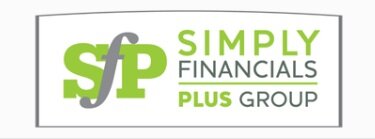Do you have an accurate way of tracking and recording the money that is coming in and out of your business?
A better way to ask this question might be: When you need information about a past transaction, how easily are you able to find it?
If you are not using a chart of accounts (or using it properly), your answers to these questions are probably not what they should be.
This article will describe what a chart of accounts is and the importance of having one for your business. By the end of it, you'll also pick up some valuable tips you can implement to improve your chart of accounts.
What is a Chart of Accounts?
A chart of accounts provides your business with a financial statement listing all accounts on your general ledger. Essentially, it is an organized breakdown of every transaction your business makes. Your chart of accounts is divided into categories and subcategories based on the type of transaction.
Typically, a chart of accounts will include categories for assets, liabilities, equities, revenue, and expenses. As you make a transaction, you’ll record it under one of these categories. Then you’ll go into more detail by breaking up each of your categories into subcategories. For example, your assets section will likely be broken down into current assets and long-term assets.
You can think of a chart of accounts as a magnifying glass for your transactions. When you need a closer look, you simply “zoom in” on the category, then the subcategory your transaction falls under.
Benefits of Using a Chart of Accounts
There are several benefits to maintaining a chart of accounts.
One of the more obvious benefits is that it allows you to quickly find transactions. Let’s say your landlord is under the assumption you didn’t pay last month’s rent, however, you know you did. Instead of sifting through paperwork, searching for receipts, or doing other time-consuming tasks to prove you paid, you can just head to the expense section of your chart of accounts and find the logged transaction.
Additionally, organization is key when it comes to managing your finances and a chart of accounts is the first step in keeping everything in order. It maps out all of the money within your business, telling you where it is and where it’s going. As you manage your finances, you can refer back to it to ensure you are on track.
For example, the expense section of your chart of accounts is helpful when reviewing your budget. To find out if you are on track with your budget, you’ll simply turn to the expense section of your chart of accounts. Every transaction will be listed and from there you can determine how close you are with your budget.
Along with having a strong system for tracking and reviewing your goals, one of the most useful benefits of a chart of accounts is that it helps build strong reporting.
Because your chart of accounts is ideally up-to-date and well organized, you will be able to pull information from it to build other key financial reports. These reports are then used to:
Determine growth opportunities
Measure the financial success of your business
Using a Chart of Accounts
To get the most out of your chart of accounts, and reap the benefits outlined above, every time you make a transaction, record it in the proper account. This includes everything. No transaction is too small to be included on the chart of accounts. Remember, the more accurate and detailed your chart of accounts is, the more useful it will be.
Your transactions will fall under two overarching sections: the balance sheet and the income statement.
In the balance sheet section of your chart of accounts, you will include these categories:
Assets
Liabilities
Equity
In the income statement section of your chart of accounts, you will include these categories:
Revenue
Expenses
You will then break down each of those categories into subcategories that make the most sense for your business and log each of your transactions according to their subcategories.
Again, the more organized your chart of accounts is, the more helpful it will be.
Extra Tips for Your Chart of Accounts
To get the most out of your chart of accounts, here are a few final tips.
While you may be tempted to set up an abundance of subcategories, don’t create too many. Too many subcategories can actually overcomplicate your chart of accounts and make finding information more difficult. For example, you don’t need a subcategory for each transaction, that defeats the purpose. Place things with commonalities together, so you have clear subcategories.
For a chart of accounts to work efficiently, you need to use it consistently. You have to log each transaction, otherwise, you’ll be right back to square one. The tracking and recording you do now will save you time in the long run.
Finally, stick with your subcategories throughout the year. If you notice a subcategory isn’t being used like it was at the beginning of the year, don’t take it off your chart of accounts. Keep it until the end of the year, this way, should you need it, it’s still readily available.
Avoid combining subcategories as well. This can confuse you and won’t be helpful. Stick with what you created before. However, if you need to add a subcategory, you can do so and it won’t affect the way you log your transactions.
Work with a Trusted Accountant
If you have any questions about using a chart of accounts, work with a trusted accountant. They’re experienced and can provide guidance to building a chart of accounts that fits your business.
An accountant, like SIMPLY Financials PLUS, will work with you to ensure your chart of accounts is set up properly, so you can reap its benefits.
We are here to point you in the right direction. Contact SIMPLY Financials PLUS today to learn how we can help you grow your business!
